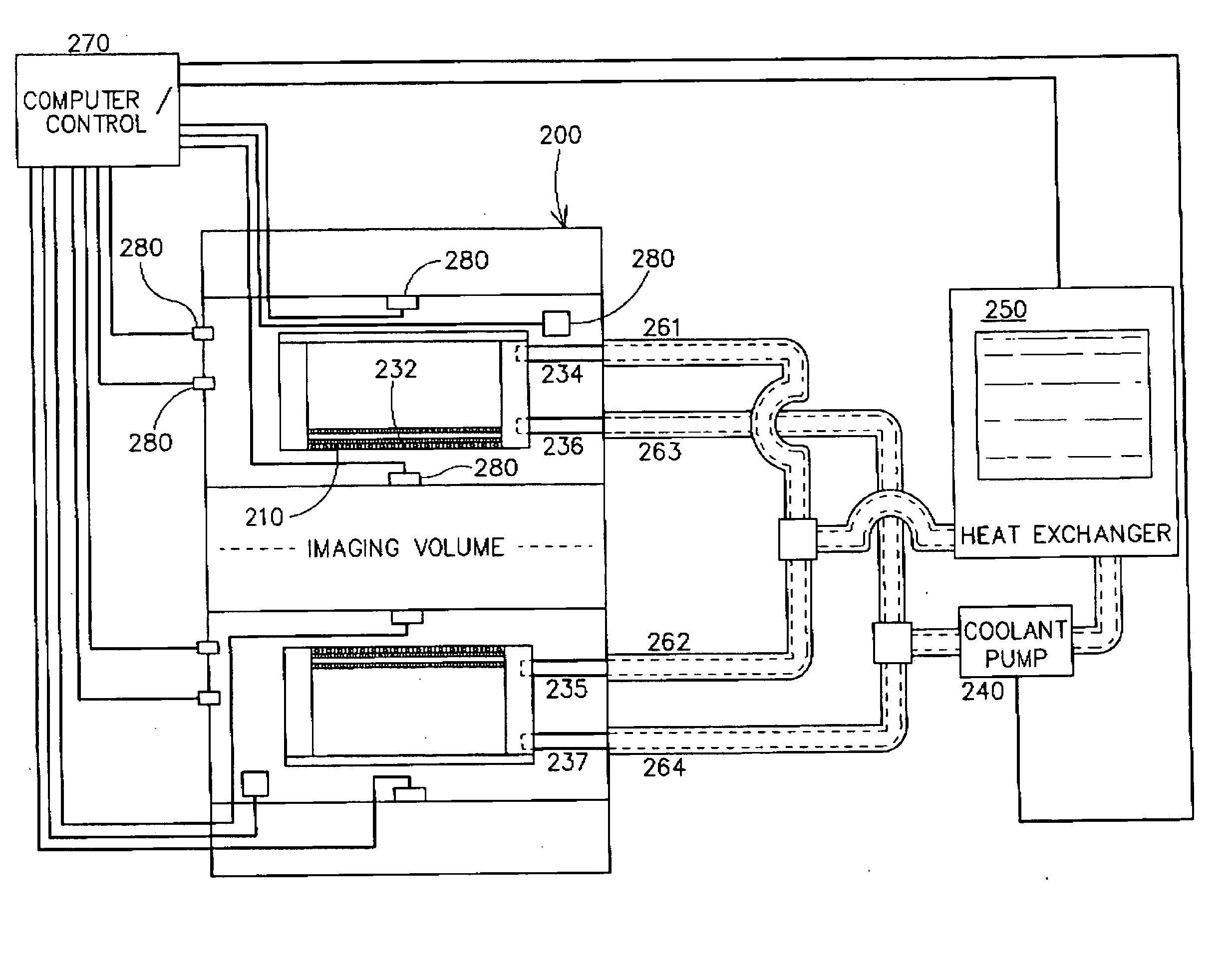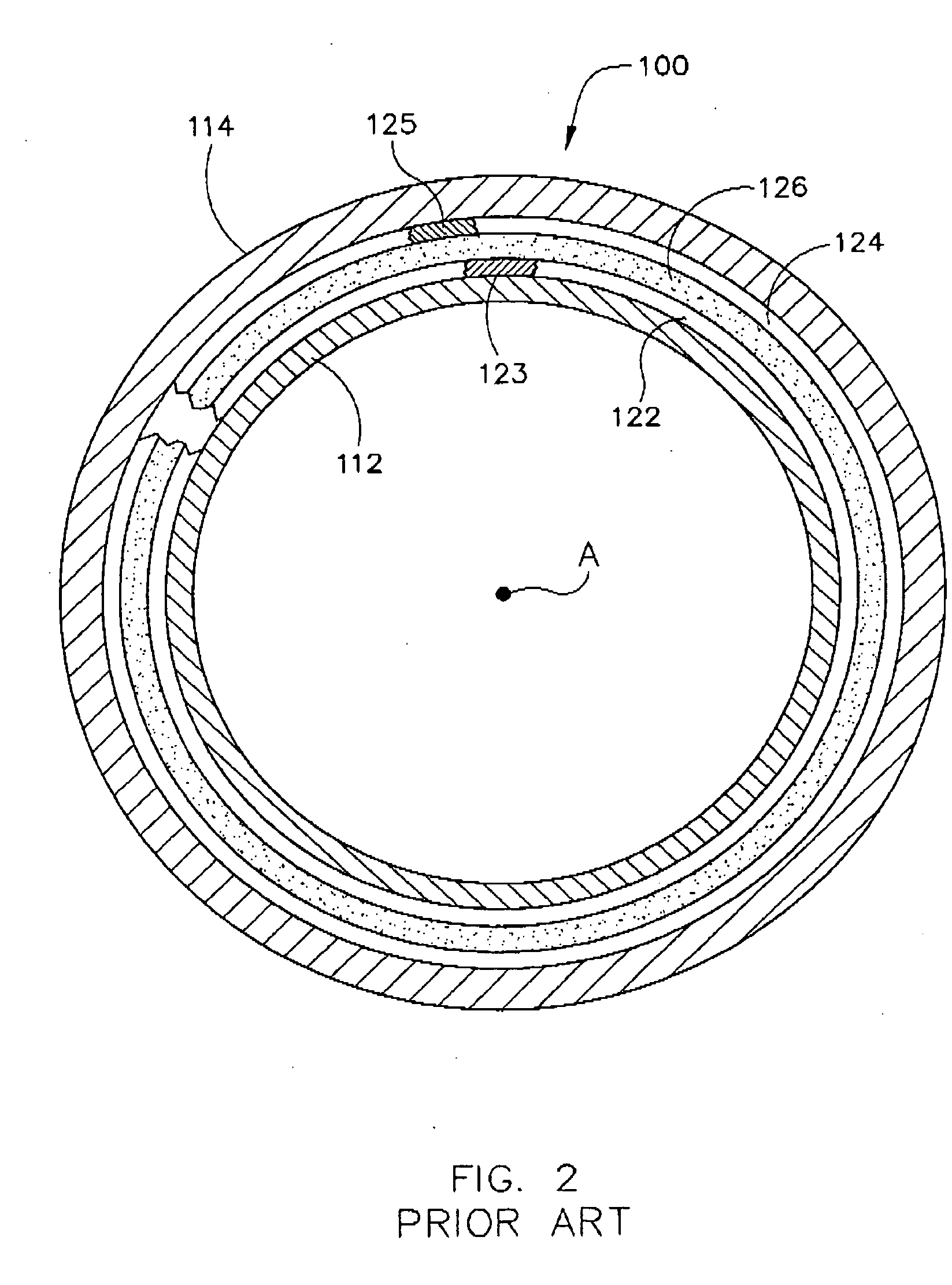Method and apparatus for directly cooling hollow conductor wound transverse gradient coil boards
a transverse gradient coil and coil board technology, applied in the field of mri systems, can solve the problems of inefficient heat conduction, material temperature limitation, and high current level of conventional gradient coils, and achieve the effects of improving thermal efficiency, improving image quality, and improving thermal efficiency
- Summary
- Abstract
- Description
- Claims
- Application Information
AI Technical Summary
Benefits of technology
Problems solved by technology
Method used
Image
Examples
Embodiment Construction
[0015]FIGS. 1 and 2 show a self-shielded gradient coil assembly 100 for an MR imaging system (not shown), comprising cylindrical inner and outer gradient coil windings 112 and 114, respectively, disposed in concentric arrangement with respect to common access A. A continuous cooling tube 122 is wound in a helix of the outer diameter surface of inner gradient coil winding 112 and a corresponding continuous cooling tube 124 is formed in a helix in the inner diameter surface of outer gradient coil winding 114, tubes 122 and 124 being respectively held in place by layers of epoxy 123 and 125. Inner gradient coil winding 112 includes inner coils of x-, y-, and z-gradient coils pairs, or sets, and outer gradient coil winding 114 includes the respective outer coils of the x-, y-, and z-gradient coil pairs or sets. Inner and outer gradient coil windings 112 and 114 are held in radially spaced apart coaxial relationship, relative to each other by annular end rings (not shown) which may be fi...
PUM
 Login to View More
Login to View More Abstract
Description
Claims
Application Information
 Login to View More
Login to View More - R&D
- Intellectual Property
- Life Sciences
- Materials
- Tech Scout
- Unparalleled Data Quality
- Higher Quality Content
- 60% Fewer Hallucinations
Browse by: Latest US Patents, China's latest patents, Technical Efficacy Thesaurus, Application Domain, Technology Topic, Popular Technical Reports.
© 2025 PatSnap. All rights reserved.Legal|Privacy policy|Modern Slavery Act Transparency Statement|Sitemap|About US| Contact US: help@patsnap.com



